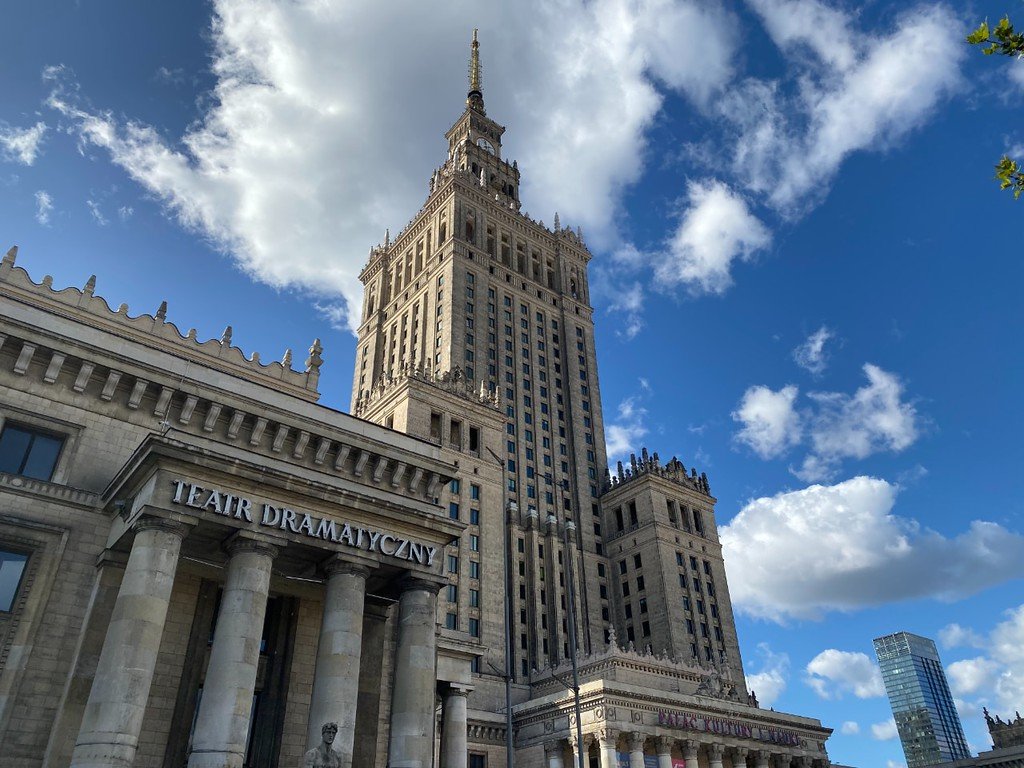The Palace of Culture and Science: A Grand Legacy of Poland
The Palace of Culture and Science: A Grand Legacy of Poland stands as an architectural marvel and a symbol of historical significance in Warsaw, Poland. Constructed in the early 1950s, this towering edifice has evolved from a gift of Soviet architecture to an iconic representation of Poland’s cultural resilience and progress. With a rich blend of cultural, scientific, and artistic pursuits, the Palace remains an indispensable attraction for tourists and locals alike. This article will take you on a journey through its history, architectural wonder, cultural significance, and exciting attractions.
A Gift from the Past: The Historical Origins of the Palace of Culture and Science
Constructed between 1952 and 1955, The Palace of Culture and Science was originally conceived as a gift from the Soviet Union to the Polish people. Designed by the renowned Soviet architect Lev Rudnev, this 237-meter-tall building was intended to demonstrate Soviet-Polish friendship. Despite its controversial origin, the Palace quickly became a monumental feature of Warsaw’s skyline, towering over the city as the tallest building in Poland for several decades.
Architectural Grandeur: A Blend of Styles and Symbolism
The Palace showcases a unique blend of socialist realism with influences from Polish historic architecture. The building features an imposing, neoclassical design with touches of Polish Renaissance style, reminiscent of traditional Polish castles. Its architectural details incorporate elements of Gothic, Renaissance, and Baroque styles, seamlessly blending them to create a cohesive structure that is both grand and timeless.
A Marvel of Construction
With over 40 million bricks used in its construction, the Palace was a major engineering feat. It boasts 42 floors and is decorated with detailed sculptures, ornate carvings, and elaborate frescos. The spire that crowns the structure is 49 meters tall, adding to its soaring profile.
Cultural and Scientific Hub: A City Within a City
The Palace of Culture and Science serves as an extensive cultural and scientific hub, housing over 3,000 rooms and a range of facilities that cater to various interests and activities. It’s home to theaters, museums, cinemas, and even an observatory, which makes it a destination for those seeking both entertainment and education.
Must-Visit Attractions
Observation Deck:
Located on the 30th floor, the observation deck provides stunning, panoramic views of Warsaw’s cityscape. On a clear day, you can see as far as 40 kilometers, making it a must-visit for tourists.
Museums:
The Palace of Culture and Science hosts multiple museums, including the Museum of Evolution and the Museum of Technology. These exhibits offer a deep dive into natural history and technological advancements, fascinating visitors of all ages.
Theaters and Cinemas:
With several theaters, including the Studio Theatre and the Dramatic Theatre, the Palace of Culture and Science provides a variety of performances, ranging from classic plays to contemporary productions. For film enthusiasts, the Kinoteka cinema showcases international and Polish films.
Science and Learning:
The Palace of Culture and Science is also home to universities and scientific institutions that promote academic collaboration and knowledge exchange. This makes the Palace a crucial player in Warsaw’s educational landscape.
The Palace in Modern Times: Revitalization and Legacy
Today, The Palace of Culture and Science is viewed not only as a historical monument but also as a dynamic cultural center. Over the years, it has undergone various renovations and updates to maintain its relevance in modern-day Poland. Each year, it hosts thousands of cultural and scientific events, such as film festivals, concerts, and conferences.
As Poland continues to embrace its identity within the European Union, the Palace remains a cherished landmark, representing the country’s rich cultural heritage and its aspirations for the future. Its architecture, history, and role in Poland’s post-war revival have made it an irreplaceable fixture in Warsaw’s heart.
In a similar vein, understanding workplace culture can have transformative effects on businesses and personal relationships alike. Glossgenius culture showcases how integrating technology into business can foster growth and community. Additionally, when discussing relationships and professional etiquette, as highlighted in elbow culture in business, we see parallels in how shared spaces influence behaviors and norms.
FAQs About Palace of Culture and Science
What is the best way to reach the palace of culture and science?
Located in the center of Warsaw, the Palace is easily accessible by public transport, including the Warsaw Metro, buses, and trams. It’s also within walking distance of Warszawa Centralna railway station.
Is the observation deck open year-round?
Yes, the observation deck is open throughout the year. However, hours may vary depending on the season, so it’s best to check in advance for current timings.
What are the main attractions inside the Palace?
Visitors can enjoy a variety of attractions, including the observation deck, museums, theaters, cinemas, and scientific institutions. Events, such as film screenings, art exhibitions, and conferences, are frequently held here.
Can I visit the Palace of Culture and Science with a guided tour?
Yes, guided tours are available and highly recommended to explore the building’s history, architecture, and attractions. Tours can be arranged in multiple languages to accommodate international visitors.
What’s the significance of the Palace’s architecture?
The architecture of the Palace of Culture and Science is a blend of socialist realism and Polish Renaissance influences. It serves as a testament to Warsaw’s post-war reconstruction and reflects Poland’s resilience and adaptability.
Conclusion:
The Palace of Culture and Science is more than just an architectural marvel. It’s a symbol of Poland’s cultural evolution, scientific ambition, and historical legacy. As one of Warsaw’s most recognizable landmarks, it continues to inspire awe and curiosity among all who visit. Whether you’re interested in exploring the arts, learning about science, or simply taking in breathtaking views, the Palace promises an experience that is as enriching as it is unforgettable.
In Warsaw, a city where the past and present converge, the Palace of Culture and Science serves as a bridge, connecting the rich history of yesterday with the boundless possibilities of tomorrow.




Post Comment